

Both points/breaker-type and electronic ignition systems have their pros and cons, something I discussed in a previous article. As long as you've got a solid base to start from, with the right control module, an electronic ignition gives you greater control over your engine. Converting an older points/breaker-type ignition system can be pretty quick and easy or quite a bit more complex and involved, depending on what kind of system you decide to install.
There are two ways you can go about converting from points to electronic ignition – you can install a factory electronic system that replaces the factory points and distributor, or you can install an aftermarket high-performance system with parts and components from various manufacturers. With just a few tools, the factory system is ready to drive in just a couple hours. High performance street/strip/drag aftermarket systems are available from a number of different companies.

Your Electronic Ignition Conversion/Upgrade Kit
Your car's ignition system consists of two main components – the distributor and the ignition coil. The distributor is what controls where the spark goes and when it gets there, while the ignition coil supplies the spark. I installed a Mopar Direct Connect performance electronic ignition system in the old Charger I had because everything I needed – distributor, ballast resistor, and control module, were included and it was (and still is) the easiest to install and cheapest kit on the market. It was also the easiest to find. Since then, a number of other manufacturers have designed similar kits.
With a little research, you can also put together your own electronic ignition "conversion kit" from parts and components that are readily available. MSD and Accel are the most well-known names in this arena. Putting an ignition system together from aftermarket components usually means buying the control and distributor separately. You can also upgrade the fuel delivery system at the same time with the right control module.
Most Electronic Ignition System Conversions Begin with Changing the Distributor
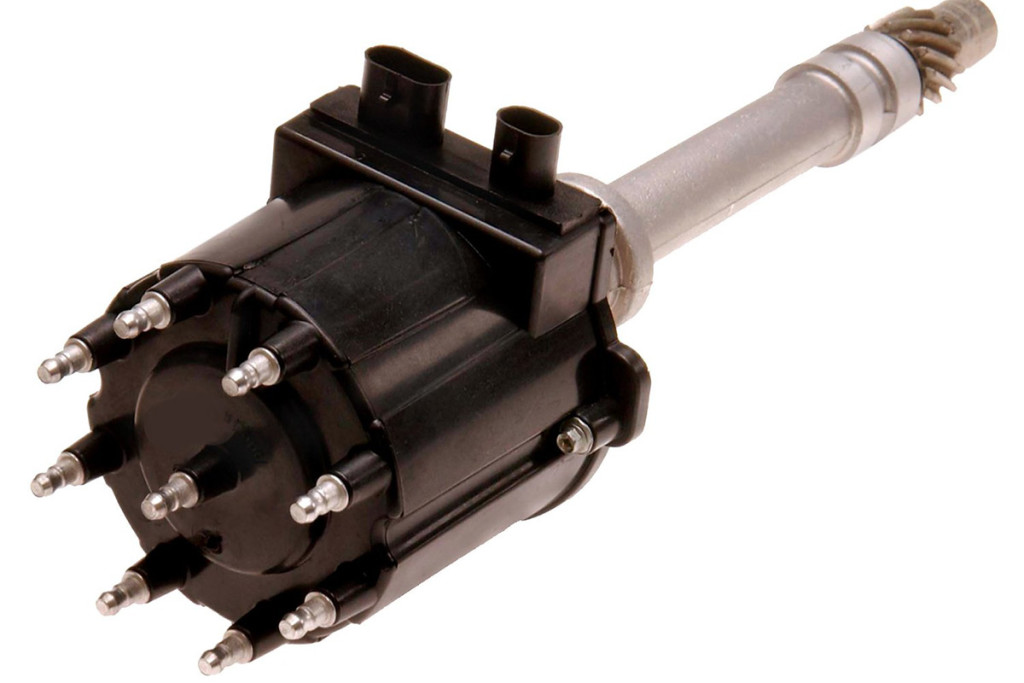
There are electronic ignition conversion kits that make you remove the points and condenser and install a reluctor and pickup in their place. This will save you a few bucks and maintain the "OEM stock" appearance for the most part. However, kits that deliver the best performance require the replacement of the distributor which takes just a few steps.
- Remove the distributor cap. This can mean popping a spring clip or turning a screw clip.
- Note the location of the wire going to number one cylinder and the vacuum advance bulb.
- Disconnect the electrical connector. Twi wires, the connector simply pulls apart.
- Loosen and remove the distributor clamp/retainer bolt. Usually ½ or 9/16 inch, this bolt can be difficult without a special distributor/timing wrench. Loosen and remove the bolt with the distributor clamp and set them aside.
- Remove the old distributor by pulling straight up. Wiggling and twisting may be required to help loosen it.
- Install the new electronic ignition distributor. Align the vacuum advance bulb and rotor to that previously noted and push and wiggle the distributor into the block until fully seated.
- Install the hold down and bolt. Thread the distributor clamp bolt with hold down and tighten to where there is resistance when moving the distributor left and right.
- Install the new cap and wires. You're installing a performance ignition system, which needs new wires. This can mean cutting the wires to size and installing connectors.
Installing a Factory Replacement Ignition Control Module
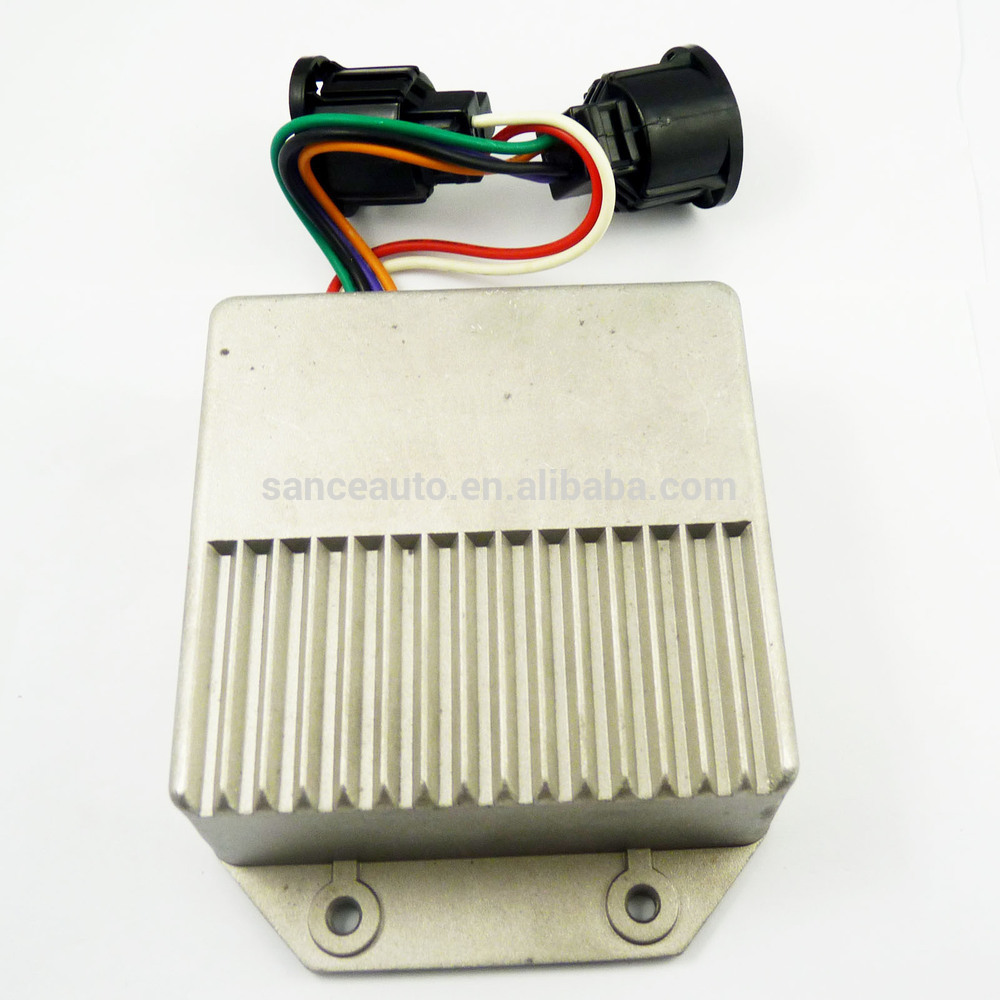
The hardest part of converting to electronic ignition using a factory kit is finding a location for the control module. My Mopar kit was four wires, power for the module and power and ground from the reluctor and pickup in the distributor. However, there was also a ballast resistor that I had to install before the ignition coil. The easiest way to mount the controller is to use self-tapping screws and a drill with a screwdriver tip. Mounting the ballast resistor is usually just a matter of removing the old stock resistor and putting the new one in its place. You may need to drill a pilot hole for it.
With the factory kit, installing the module consists of plugging the molded connector into the corresponding connector coming from the distributor and applying power and ground. With a factory kit this just means splicing the corresponding wires together. Installing an aftermarket kit may mean using a meter or test light to find the wires coming from the ignition key (brown and yellow on all 60s models Chrysler products).
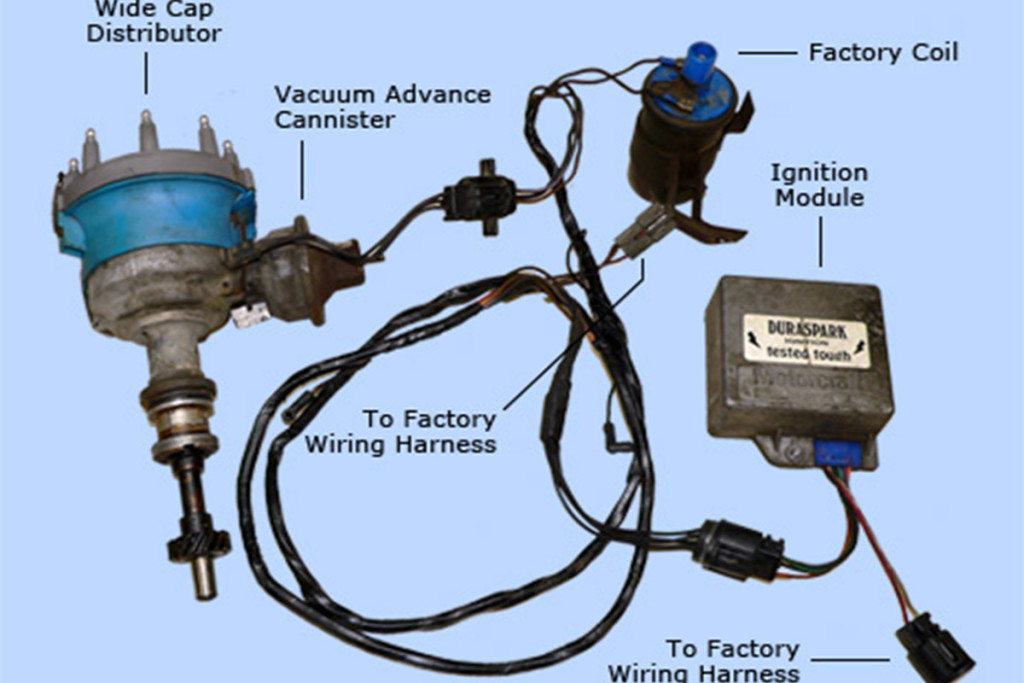
Installing a Performance Aftermarket Electronic Ignition Kit
Aftermarket performance electronic ignition kits take more time and effort to install, although this isn't to say that the installation is difficult. The hardest part of the job, again, is going to be finding somewhere to mount the control module and finding the "hot" wire from the ignition key. When deciding on a location for the box, you need to keep in mind what kind it is. For example, the Digital 6AL box from MSD has rev limiter switches on the top that you may want access to while driving thus, you've got to a find a spot that's within arm's reach. I'm going to use MSD's Digital 6A/6AL as an example. You may have to look for different color wires.
- Locate the heavy black and red wires from the control module and route them to the battery. Don't hook them up yet.
- Locate the orange wire and the smaller black wire in the control module harness and route them to the ignition coil. Black goes to coil negative and orange goes to coil positive.
- Route the smaller red wire to where you can tap into the "Ignition" lead coming from the ignition key.
- Route the violet and green wires to the distributor and connect it to the trigger lead from the distributor.
- Route the grey wire to your tachometer and connect it to the tach trigger-usually a green wire.
- Make solid connections to battery positive and negative with the heavy black and red wires.

Remember, you need to make sure that you mount the controller solidly to minimize vibrations. Many of them actually come with rubber isolators to protect them from vibration. Use them. Also, if you have to penetrate the bulkhead/firewall with any wires, make sure you protect the wires by installing a rubber or plastic grommet first.
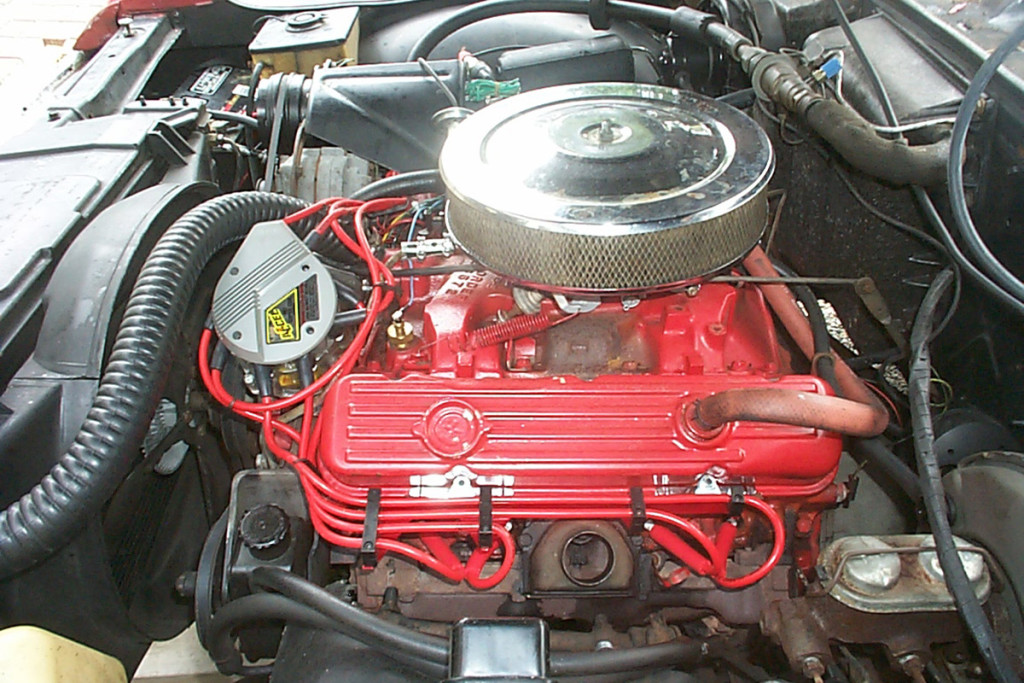
What to Do If the Wires Are too Short
The wiring harnesses that come with electronic ignition control modules are usually pretty long and will reach where they need to go. Usually. Sometimes, though, you need just a little more length to get the wire where it needs to go. As long as you either solder (and seal) the connection or use quality solder-less/crimp connectors, you're fine. Also remember to bump up the size of the wire you use by one. For example, if you have to add a few feet to the heavy black and red power leads, be sure to use at least 12 gauge wire. If you need to extend any of the other wires, be sure to use at least 16 gauge. These wire sizes are precisely calculated at the factory to deliver the required amount of current without overheating. Any added length adds to the wire's resistance, thus we want to use a slightly larger wire when making extensions.
A Word about Ground Wires
I can't remember how many times I've gotten a call to go help a friend or customer who installed their own aftermarket electronic ignition system and had problems that were related to ground. The main power lead should go directly to the battery and use a high quality eye connector. If you've got smaller grounds to connect, they should go directly to the frame or chassis and you should use a wire brush or sandpaper to remove corrosion, paint, rust, and anything else that will inhibit the flow of current.
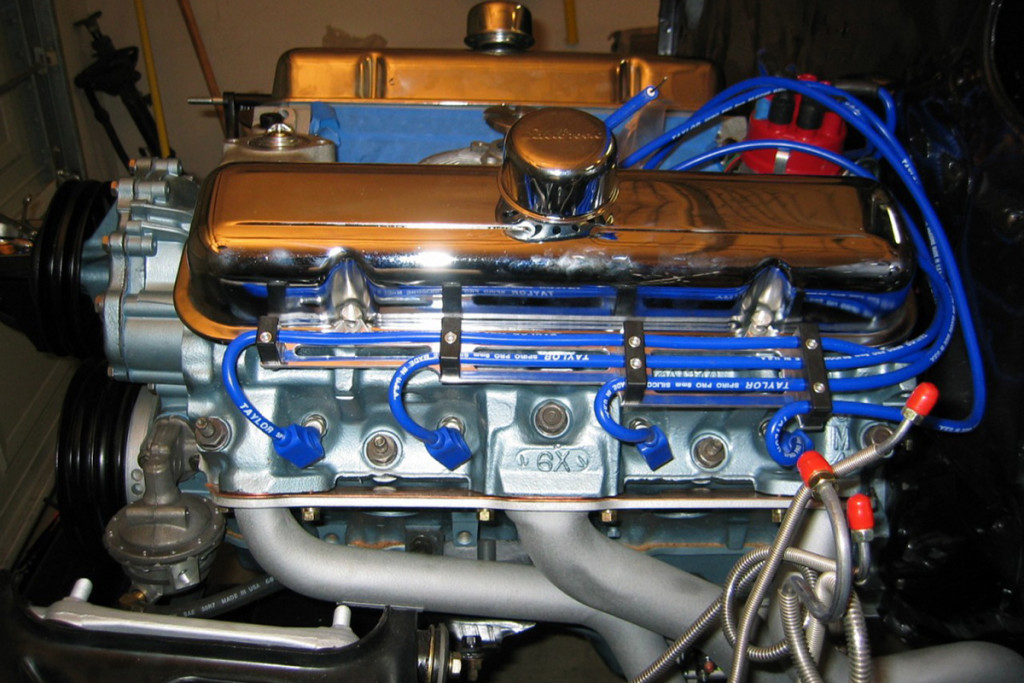
Timing It When You're Done
Now that you've got everything (hopefully) installed correctly, it's time to fine tune the installation by setting the timing. This is why you didn't torque down on the distributor hold-down bolt when you replaced the distributor. Crank the engine up and disconnect and plug the vacuum advance line. Get the engine RPM into the ballpark (around 700-800 RPM) with the idle adjuster screw on the carb or throttle body.
Now, slowly and incrementally turn the distributor clockwise or counterclockwise, listening to the engine as you go. As you advance the timing into and just past ideal, the RPM will increase. When you've gone too far, the RPM will start to drop and the engine will start to stumble. Get the RPM into what sounds like an ideal speed range and tighten the hold down bolt. If you've got one, you can hoop up a timing light to the number one plug and the battery and set the timing to factory spec. However, I recommend doing a little "timing by ear" once you get the timing into spec to get the best performance possible.
Source: https://www.racingjunk.com/news/converting-from-points-to-electronic-ignition/
Posted by: brittanyourch1t9850.blogspot.com